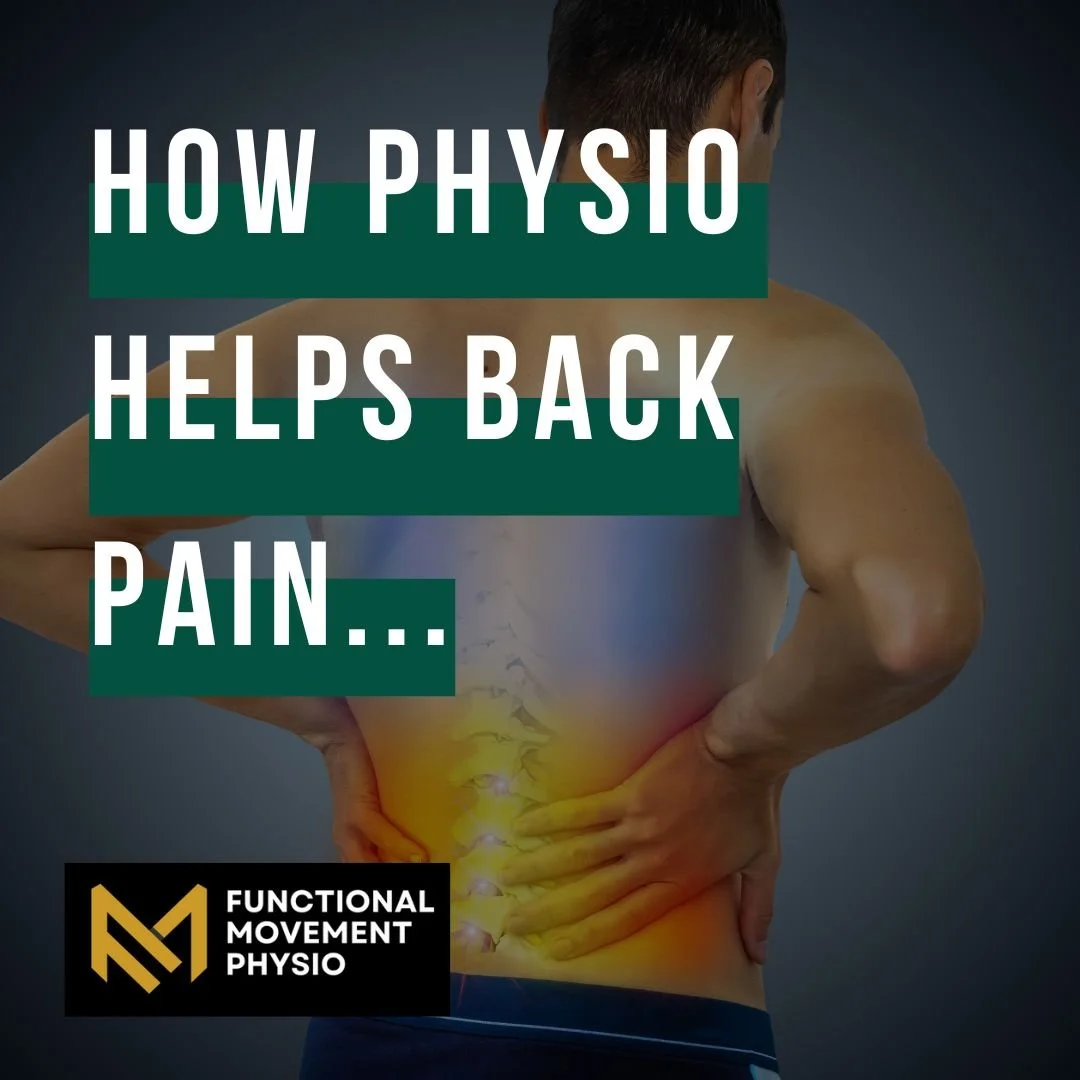How physiotherapy helps back pain: Causes, treatments and long-term relief
You do not have to suffer with pain pain, physio can help.
Is your back pain making everything harder than it should be?
Lower back pain can sneak into your life and slowly take over. It affects how you sit, how you sleep, how you move and how you feel — every day. Whether you're an athlete, a busy parent or someone who spends long hours at a desk, back pain has a way of showing up at the worst times.
Maybe you’ve tried rest, stretching or even strong painkillers. Maybe you’ve told yourself, “It’ll go away soon.” But weeks pass, and it’s still there. It’s frustrating, exhausting and limiting.
Here’s the truth: back pain usually doesn’t go away on its own. And while medication might give you temporary relief, it won’t fix what’s causing the pain in the first place.
That’s where physiotherapy comes in.
Why physiotherapy works for back pain
Physiotherapy is more than just exercises or massage. It’s a personalised treatment that looks at how your body moves, what’s not working properly, and how to restore balance, strength and mobility.
Instead of just masking the pain, physiotherapy helps:
Identify the root cause of your back pain
Improve posture, strength and flexibility
Reduce inflammation and relieve pressure on nerves
Teach you how to move in ways that support your spine
Prevent the pain from coming back
It’s a hands-on, movement-based solution that actually works - and it’s backed by clinical research and real results.
Common causes of back pain we see at Functional Movement Physio
At our Liverpool clinic, we regularly help clients with both short-term and long-term back pain caused by:
Poor posture
Long hours spent sitting, especially with poor ergonomics, can lead to tight hips, weak core muscles and compressed lower back joints. Over time, this leads to real pain and stiffness.
Sports injuries
Lifting with poor technique, sudden twists or muscle overload can all cause back pain. We specialise in rehab for gym-goers, runners and athletes.
Disc problems and sciatica
If you have sharp pain radiating down your leg, it could be from a disc bulge or herniated disc pressing on a nerve. Physio can help reduce the pressure and calm the nerve.
Muscle imbalances
Weak glutes, tight hamstrings or underactive core muscles are often behind recurring back pain. Our job is to restore balance and movement control.
Stress and tension
When we’re under pressure, we hold tension in our shoulders and back. This can lead to muscular pain even without an obvious injury.
What to expect in a physiotherapy session
Each session is tailored to you. Here's what a typical back pain assessment and treatment might include:
1. Movement assessment
We’ll explore how you move, test your flexibility, strength and control, and look at how your posture may be affecting your back.
2. Hands-on therapy
This may involve:
Joint mobilisation
Soft tissue massage
Trigger point therapy
Dry needling (if appropriate)
Sports massage techniques
The goal is to reduce pain and improve movement.
3. Personalised rehab plan
You’ll be guided through exercises that build core strength, improve spinal control and restore mobility. We often include:
Glute bridges and deep core exercises
Hip and spine mobility drills
Clinical Pilates-based movements
Stretching for tight areas
You’ll also be given home exercises that are easy to follow and actually make a difference.
4. Advice and education
You’ll learn how to sit, stand, lift and move in ways that support your spine — not stress it. We’ll also show you what to avoid and how to build movement confidence again.
How long does recovery take?
Everyone is different, but here’s a rough guide:
Mild strain or tightness: 1 to 3 sessions
Postural or recurring back pain: 3 to 6 sessions
Disc-related or nerve pain: 6 to 10 sessions
Chronic back pain: longer-term support plus guided exercise
Many people feel better within the first few sessions — and progress continues with consistent movement and support.
Can physiotherapy prevent back pain returning?
Yes, and that’s a key part of what we do at Functional Movement Physio. Once you’re out of pain, we focus on keeping you that way. Your physio will help you:
Build strength in the right areas (especially your glutes and core)
Improve mobility in tight areas like hips and thoracic spine
Correct your movement habits and posture
Set up a training or activity plan that suits your lifestyle
We often recommend ongoing support through clinical Pilates or functional rehab sessions to stay strong and mobile long term.
When to see a physio for back pain
Book an appointment if:
Your back pain has lasted more than a few days
It comes and goes but keeps returning
You feel stiff, tight or weak
You have pain or tingling in your leg
You’re struggling to sit, stand, lift or sleep comfortably
You don’t need a referral. You just need a plan.
Let's help you move better and feel better
At Functional Movement Physio, we help active people, professionals and everyday movers recover from back pain and get back to doing what they love. Whether you need sports physiotherapy, rehab, clinical Pilates or sports massage, we’ve got you covered.
📍 Find us at: Hub Squared, 3a Bridgewater Street, Liverpool, L1 0AB
📞 Need help now? Get in touch or book online — no GP referral required
💬 Friendly, expert care tailored to you
Ready to get started? Book your physiotherapy assessment today and take your first step toward a stronger, pain-free back.

